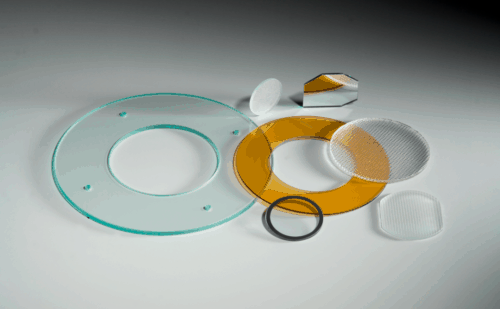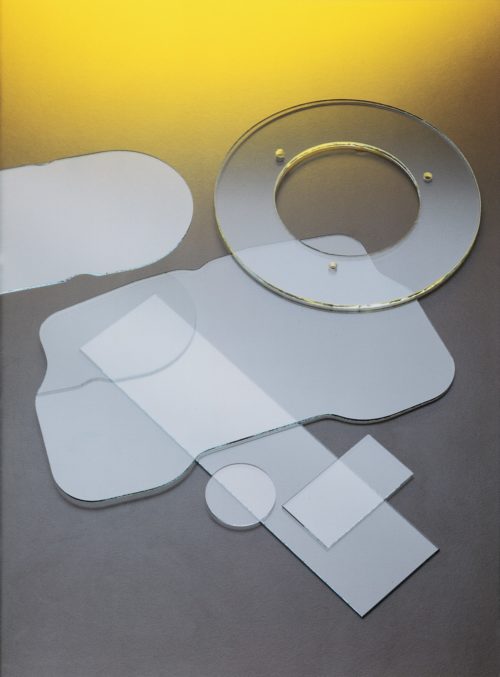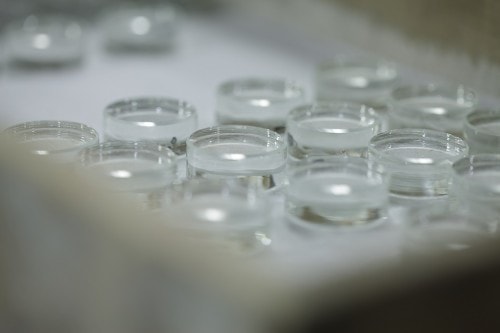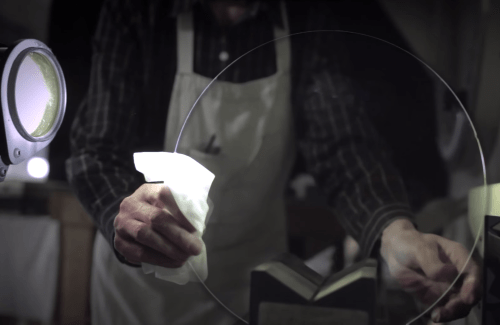
Swift Glass’s ISO Class 7, (Class 10,000,) Clean Room & Ultrasonic Bath
Leave a CommentClean rooms are controlled environments used to minimize contamination in sensitive applications, such as manufacturing processes and scientific research facilities. These structures are designed to reduce the amount of airborne and surface particulates, as well as to monitor and stabilize environmental parameters—e.g., temperature, humidity, static electricity, and pressure—within the contained space. Clean Room & Ultrasonic […]

Swift Glass Expands Wafer Analysis Capabilities with Multi-Surface Profiler
Leave a CommentGlass wafers have a variety of applications throughout the electronics, computer, and biotechnical manufacturing fields. During production, the ability to make precise measurements ensures that wafers fit the necessary specifications for their intended purpose. A Multi-Surface Profiler (MSP) machine supports high-precision metrology in the production of glass wafers for industrial purposes. With the addition of […]

What is Dispersion in Optics?
Leave a CommentIn optics, dispersion refers to light that is separated by individual colors as it passes through an object. Rainbows are the most common example of this event. The rainbow forms when white light is separated into components of different wavelengths (or colors). Dispersion can result in signal degradation in many applications, especially over large distances. […]

Understanding Glass Properties: The Absorption Spectrum
Leave a CommentFor engineers who work with glass parts or components, there are many important properties of glass to understand. In previous posts, we have covered several different properties of glass, including transmittance, transmission, and refractive index. Transmission and transmittance are both ways of measuring the amount of light that can pass through a material without being absorbed. Refractive index […]

Single-Sided vs. Double-Sided Polishing
Leave a CommentIn many industrial applications, glass must be polished in specific ways to achieve the correct optical properties. Glass polishing offers an ideal solution for glass components that require a high level of precision, as polishing uses very fine abrasive particles to polish surfaces to a superior finish. The Differences Between Single-Sided vs Double-Sided Polishing There […]

The Key Differences Between Transmission & Transmittance and How to Apply Them to your Application
Leave a CommentFrom magnifying glasses to tinted windows to one-way mirrors, people prize glass for its ability to transmit (or not transmit) light. Measuring light transmission and transmittance plays a huge role in selecting an appropriate type of glass for your needs. Transmittance measures the amount of light able to pass through a material without the material reflecting or […]

Low-Iron Glass vs. Standard Clear Glass
Leave a CommentThe differences between low-iron and traditional clear glass are pronounced enough that many people can’t believe what they’re seeing – or what they haven’t been – when they’re shown low-iron glass options. Traditional clear glass can be hazy and is often faintly tinted, even at its best. Color issues may arise on the edges of […]

Understanding the Refractive Index of Glass
Leave a CommentUnderstanding the behavior of light can be an important factor when determining which glass materials to use for your manufacturing process. When light passes through a substance, it decreases in velocity. This is manifested by an increase in the substance’s refractive index. Much can be learned about the optical properties of a glass material by […]

Four Key Applications for Glass Wafers
Leave a CommentGlass wafers are circular pieces of precision glass used in numerous technical and industrial applications. Swift Glass’s wafer fabrication process utilizes proprietary technologies to deliver the finely-made components required by our customers in a range of demanding industries. High-quality glass material is selected, then the wafer is carefully shaped via cutting and grinding processes, then […]
Tags: glass manufacturing

Molded Glass vs. Flat Glass: What’s the Difference?
Leave a CommentGlass is one of the world’s most complex, high-performance materials: specialty glass can be engineered to suit miniature, hyper-precise optics just as readily as it can be manufactured for bullet and fire-proof windows and walls. Glass can withstand explosions, extreme environments, and some of the world’s most aggressive and corrosive chemical materials. Glass formulations can […]



